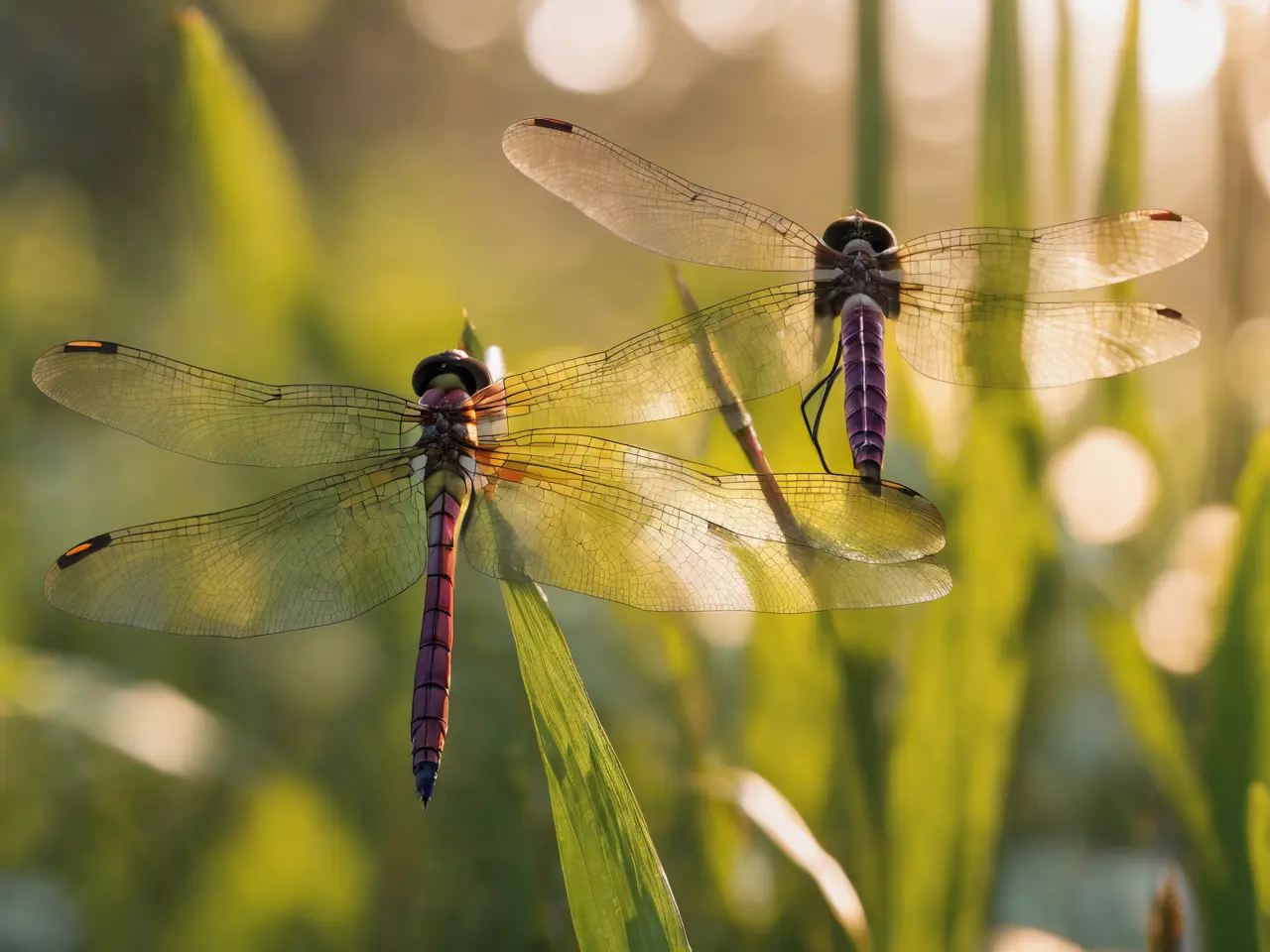Dragonflies, with their iridescent wings and agile flight, are a common sight in many landscapes. Yet, sometimes, they seem to appear in larger numbers, especially in residential yards. Understanding why these fascinating insects are attracted to certain areas can provide insight into the health and characteristics of your garden ecosystem. This article will delve into the reasons behind the presence of numerous dragonflies in your yard, highlighting their ecological importance.
Dragonflies
Dragonflies are ancient insects that have inhabited our planet for millions of years. They go through a unique lifecycle that includes an aquatic larval stage, making them closely tied to water bodies. Adult dragonflies are known for their hunting prowess, feeding on smaller insects like mosquitoes, gnats, and flies. These characteristics make dragonflies excellent indicators of environmental health and balance. They play a critical role in controlling pest populations and can even serve as a gauge for water quality in their larval habitat.
Common Attractions for Dragonflies in Yards
Several factors can make your yard an attractive habitat for dragonflies:
- Presence of Water Sources: Dragonflies lay their eggs in water, and their larvae, known as nymphs, live in aquatic environments. Therefore, having a pond, stream, or even a water garden can be a significant attractant.
- Abundance of Prey: An environment rich in small insects can be a feeding ground for dragonflies. If your yard has a high population of mosquitoes or other small insects, it’s likely to attract these predatory insects.
- Suitable Perching and Breeding Spots: Dragonflies often perch on tall grasses, reeds, or other plants to scout for prey. Gardens with diverse vegetation offer excellent perching and breeding grounds for dragonflies.
- Microclimate Conditions: Factors such as warmth, sunlight, and shelter from strong winds can make a garden more inviting to dragonflies. These insects thrive in warm conditions with ample sunlight, which is vital for their predatory activities.
Ecological Indicators: What Dragonflies Say About Your Yard
Dragonflies are not just random visitors; their presence can reveal a lot about your yard’s ecological state:
- Healthy Insect Populations: A large number of dragonflies often means there is an ample food supply, indicating a healthy insect ecosystem in your yard. Since dragonflies feed on mosquitoes, gnats, and other small insects, their presence can signal a balance in these populations.
- Water Quality: If you have a pond or water feature and it’s attracting dragonflies, it’s often a sign of good water quality. Dragonfly nymphs need clean, oxygen-rich water to thrive. Thus, a thriving dragonfly population can suggest that your water feature is in good ecological health.
- Biodiversity: Dragonflies are a part of a complex food web. Their presence, especially in varied species, can indicate high biodiversity in your garden. This biodiversity is crucial for a balanced and resilient ecosystem.
Benefits of Having Dragonflies in Your Yard
Welcoming dragonflies into your yard can be beneficial for several reasons:
- Natural Pest Control: Dragonflies are efficient predators of many insects that humans consider pests, especially mosquitoes. By controlling these populations, dragonflies can make your outdoor time more pleasant and reduce the need for chemical insecticides.
- Pollination Assistance: While they are not as prolific as bees, dragonflies do contribute to pollinating plants. This is particularly true in aquatic environments where dragonflies help to pollinate water plants.
- Aesthetic and Educational Value: Dragonflies with their varied colors and agile flight are fascinating to watch and can add an element of beauty to your garden. They also offer an excellent opportunity for educational observation, especially for children, fostering a closer connection with nature.
Managing Dragonfly Populations
While having dragonflies in your yard is beneficial, it’s important to manage their population effectively. Here are some tips to maintain a healthy balance:
- Habitat Management: If you find the dragonfly population overwhelming, you might consider altering their habitat slightly. Reducing the number of standing water sources can help control their breeding. However, this should be done carefully, as it can affect other aspects of your garden’s ecosystem.
- Encouraging Natural Predators: Maintain a balanced ecosystem by encouraging birds and other natural predators of dragonflies. This can be done by installing bird feeders or nesting boxes to attract birds that may prey on adult dragonflies.
- Plant Diversity: Cultivating a variety of plants can attract a more diverse range of insects, which in turn can help regulate the dragonfly population naturally. A diverse plant life supports a balanced food web in your garden.
Ethical Considerations
It’s important to remember that dragonflies are an integral part of the ecosystem. Any actions taken to manage their population should be ethical and considerate of the overall environmental impact. Avoid using chemical pesticides or other harmful methods that can disrupt the ecological balance.
Conclusion
The presence of a large number of dragonflies in your yard is usually a positive sign, indicating a healthy ecosystem and providing natural pest control. By understanding the factors that attract these insects and managing their habitat responsibly, you can enjoy the benefits they bring to your garden. Embracing dragonflies as part of your garden’s wildlife can enhance your outdoor experience, contributing to a vibrant, ecologically balanced, and thriving garden environment. Remember, fostering a diverse and balanced ecosystem is key to a healthy and sustainable garden.



